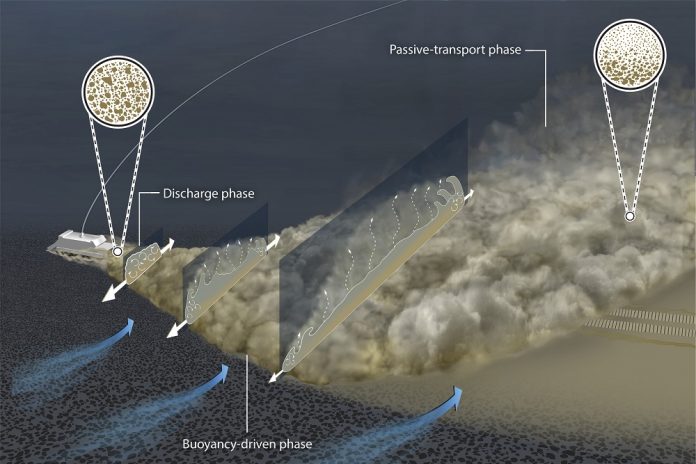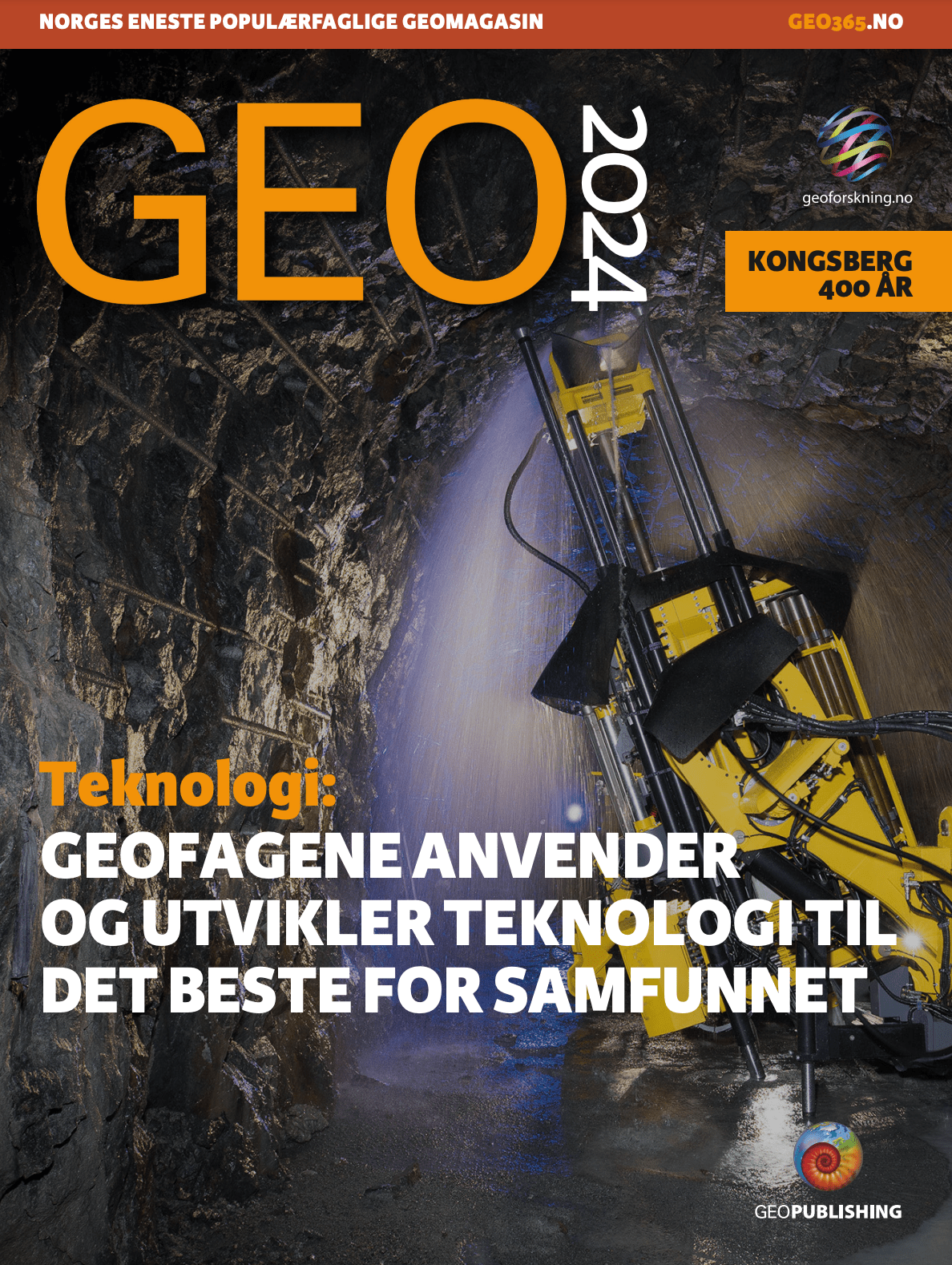Conceptual sketch showing a nodule collector plume’s discharge, buoyancy-driven, and passive-transport phases. Source: Peacock and Ouillon (2023)
– Plume dispersion is not solely a matter of distance from the mine site, physical processes are also important, said Thomas Peacock, professor at Massachusetts Institute of Technology (MIT) at the Underwater Minerals Conference (UMC) in Rotterdam in October.
One of the key environmental issues concerning deep-sea mining, whether it’s polymetallic nodules, crusts, seafloor massive sulfides, or something more exotic like REE-enriched muds, is how mining equipment and activities on the seafloor may stir up sediments and produce plumes.
The MIT professor and his team have spent the last few years conducting field research and doing computational modeling to develop a better understanding of how disturbances on the seafloor generate plumes and how these plumes evolve in time and space.
Deep-sea mining for polymetallic nodules will basically generate two types of plumes. First, there are the “collector plumes” that vehicles generate on the seafloor as they drive around mining nodules down to 6,000 meters below the surface, and second, “midwater plumes” that are discharged through pipes that descend 1,000 meters or more into the ocean’s aphotic zone, where sunlight rarely penetrates.
In 2021, a pre-prototype nodule collector (Patania II) was tested by Global Sea Minerals Resources (GSR), while scientists from 29 European institutes monitored the environmental impacts, such as plume generation and dispersion, of the trial mining operation. The trial was performed at 4,500 meters depth in the Pacific Ocean’s Clarion-Clipperton Zone (CCZ). The CCZ is considered the largest nodule field in the world, where several state-backed companies currently hold exploration licenses.
Plume monitoring was performed by utilizing instruments on the mining vehicle, on AUVs, and at fixed locations (moorings) at some distance from the mining test site.
The various instruments recorded plume directions, heights, speeds, and densities while the collector was moving along the seafloor on a pre-planned path.
Last year, the MIT and Scripps Institution of Oceanography team published an article demonstrating that the majority of the sediments in plumes remained below two meters above the seafloor, spread laterally for some tens of minutes, and then settled on the seafloor.
The observations contrasted the general belief that the suspended sediments may rise higher into the water column and travel far (many kilometers).
However, Peacock stated that plumes have very complex behavior and are influenced by multiple physical processes.
He pointed to the mooring observations as an example. Not surprisingly, the moorings located downstream of the prevailing ocean bottom current (moving south) detected the plumes at certain points in time following the test mining operations. However, a mooring located northeast of the mining site also detected a plume, meaning this particular plume moved against the current as a turbidity current powered by gravity.
Peacock explained that the plume moved down a mild slope of a few degrees on the ocean floor and highlighted the need for high-resolution monitoring of a potential mining site to better understand the fate of the sediments transported as plumes.
The observation also emphasizes the importance of understanding what degrees of slopes are needed to generate far-reaching turbidity currents. According to the MIT professor, they are currently looking into this.
Being able to fly freely in the water column, the AUVs were valuable for determining the height of the plumes. Generally, the sediments stayed relatively close to the ocean floor. They observed signs (“signals”) of suspended sediments at 5 meters height, about one-tenth of that signal at 10 meters height, and no detectable sediments at 30 meters height.
In closing, Peacock underscored the need for integrated monitoring and high-resolution near-field modeling of potential mining sites to assess the potential contribution of turbidity currents, which should then be input for far-field ocean models. The evolution of sediment plumes is controlled by a multitude of physical processes over a wide range of scales, in time and space. Further, there is a need for a better understanding of what to consider a critical slope to generate far-moving turbidity currents.
Deep Sea Minerals 2023
The leading international conference on Deep Sea Minerals will be organized for the third time in 2023.
The event will take place in Bergen at the famous Hotel Norge December 5 – 7th 2023.



